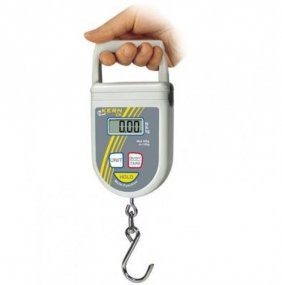What are weighing scales?

The online shopping experience is changing our lives. After purchasing online, we expect our purchases to be at our door the next day. Companies like Amazon have developed a model that satisfies this growing demand for convenience and fast delivery. So, what does this mean to those who manufacture, warehouse, or transport these goods? I can put it in one word – speed!
And to meet that need for speed, especially where space is limited, every logistical process now requires a higher degree of processing with more accurate information. Tracking shipments and orders and maintaining visibility is not just a convenience – it is a requirement.
Existing processes are being replaced with more efficient ones that take less time, improve safety, and deliver quickly. At the top of the pile of new technologies responding to this need are mobile weighing alternatives.
What are advantages of mobile weighing technologies?
Mobile weighing has a number of advantages in today’s fast-paced environment. The load is weighed on the pallet jack or forklift as soon as it is picked-up, reducing time required to weigh, improving safety by reducing traffic congestion to and from a stationary scale, and improving forklift operation times.
Also, with mobile weighing you can capture critical process data at the pallet jack or forklift and communicate it wirelessly to systems that track and measure the process. This reduces the time required for recording critical process data and reduces recording errors.
How are older technologies being replaced?
Common warehouse and manufacturing designs have been developed around stationary scales located in strategic areas within the facility. Under this scenario, forklifts and pallet jacks move product from the loading/unloading area to the scale, weigh the goods, and manually record information before returning back to the loading/unloading area.
This tried and true design is still the backbone of many companies and will always have an important place at the table. For example, where processes and product or material moving through the material handling is cumbersome or have awkward shapes, a centrally located static scale may be fine.
But those moving pallets, boxes, or other typical units may find that mobile weighing makes more sense. Especially for companies that are running in an ever-increasing race to satisfy customers’ requirements for speed, stationary scales may consume too much time and energy. The traditional method of moving goods to and from the scale also produces traffic congestion in higher volume processes.
With mobile weighing, you can pick up the product while loading or unloading, then put it down again and all this information gets communicated through the work-in-process system. In fact, any time you find yourself wanting to know more about products in a faster time frame, you should start considering mobile weighing options.
What are my options?
There are a variety of mobile weighing options in the marketplace. Examples include Fairbanks’ Pallet Weigh and Pallet Weigh Plus Series pallet jacks for weighing pallets on the jack; the BlueLine Series weigh forks with a built-in weighing device; the CP Series carriage plate scale; and the FH and FHX Series hydraulic weighing devices.
One large grocery chain in the south is evaluating the Pallet Weigh Plus as an alternative to tying up a very high value fork lift on simple loading procedures. In addition, use of the new weighing technology will improve their drivers’ line of sight and thus improve safety.
Another example is a medium size manufacturing industry that does about 40, 000 pallet movements per year, one-quarter of which has to be weighed. Using a BlueLine fork scale for 10-12, 000 weighments, they saved about 3 minutes per weighment, amounting to about $21, 000 per year.
If you decide to implement a mobile weighing strategy, I definitely recommend keeping your existing scales and proving out a new process in phases. Take small incremental steps, prove out each one, and then move to the next step. A good mobile weighing process centers on data collection, so think strategically about specifically what you need to collect. Also, even after you implement a mobile weighing process, keep the static scale as your permanent backup.
Related posts:

 One of the more cost-effective measurements in a paper mill is that which monitors the flow of pulp stock into the head box of the paper machine. The stock level…
One of the more cost-effective measurements in a paper mill is that which monitors the flow of pulp stock into the head box of the paper machine. The stock level… Why is taking all the tricks called a boston in pinochle what are kegel exercises How to change administrator on windows 10? In what order should you learn tricks…
Why is taking all the tricks called a boston in pinochle what are kegel exercises How to change administrator on windows 10? In what order should you learn tricks… Overview Marel Marine Scales are specifically designed for use on board fishing vessels and factory trawlers. This cost-effective series of scales ranges from the…
Overview Marel Marine Scales are specifically designed for use on board fishing vessels and factory trawlers. This cost-effective series of scales ranges from the… How long to air fry french fries what does fafsa stand for What does it mean when ypu use alocohol and the tips of your fingers turn white Who raps bitches aint…
How long to air fry french fries what does fafsa stand for What does it mean when ypu use alocohol and the tips of your fingers turn white Who raps bitches aint… Globe s portion control scales can be used in a wide spectrum of applications from delis and pizza parlors, to bakeries and restaurants, or any establishment where…
Globe s portion control scales can be used in a wide spectrum of applications from delis and pizza parlors, to bakeries and restaurants, or any establishment where…